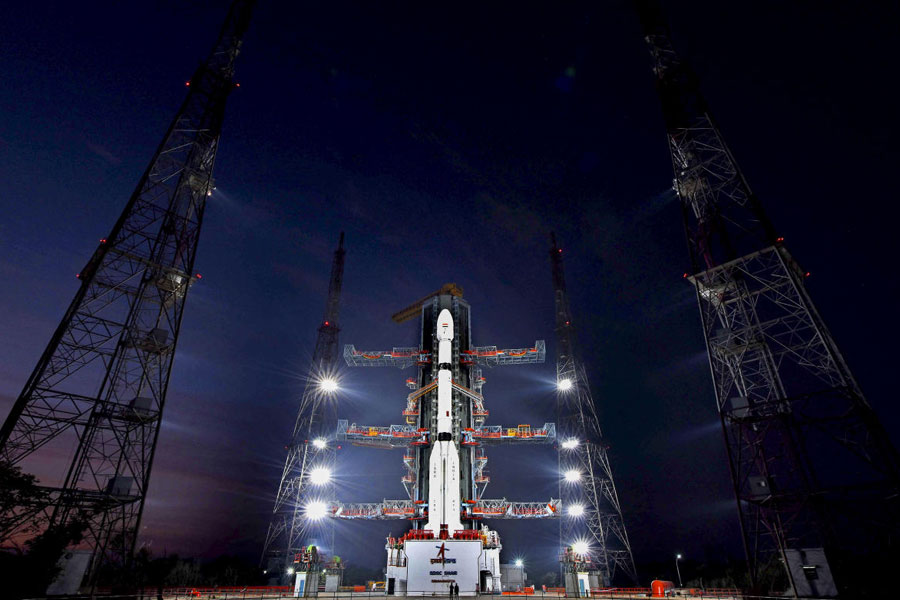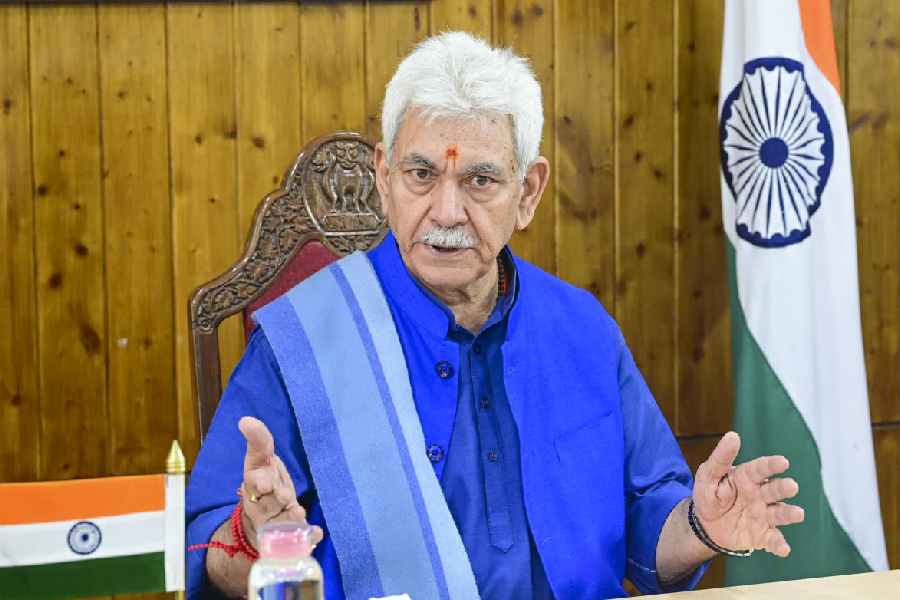Moving ahead on its mission to study the Earth and ocean surfaces, ISRO on Saturday successfully launched its next generation weather observation satellite INSAT-3DS onboard a GSLV rocket into a precise orbit.
The flawless mission prompted the ISRO to virtually heave a sigh of relief over the challenging GSLV rocket technology, as the director of today's mission said the "naughty boy has matured into an obedient, disciplined boy," apparently referring to its past unsuccessful missions.
ISRO Chairman S Somanath said the success gave the space agency "greater confidence," as the GSLV will be next deployed in the NISAR mission, a collaborative effort with the US' NASA.
The INSAT-3DS satellite, weighing 2274 kg is a follow-on mission of the third generation meteorological satellite to be placed in a geostationary orbit and is funded by the Ministry of Earth Sciences.
The objective of the mission is to provide continuity of services to existing operational INSAT-3D (launched in 2013) and INSAT-3DR (September 2016) for enhanced meteorological observations, monitoring of land and ocean surfaces, weather forecast and disaster warning, as well as to provide satellite aided Search and Rescue Services (SAR) among others.
At the end of the 27.5 hour countdown, the nearly 52 metre tall GSLV-F14 lifted-off majestically from the second launch pad at this spaceport here, at a pre-fixed time of 5.35 pm.
The three stage rocket with a cryogenic upper stage, after a flight of about 20 minutes, got separated from the vehicle as planned and placed the satellite into a Geosynchronous Transfer Orbit.
Later, scientists at ISRO would undertake a series of manoeuvres to place the satellite into the Geo-stationary orbit in the coming days.
The rocket carries imager and sounder payloads, data relay transponders, satellite aided SAR transponders which would be used to study cloud properties, fog, rainfall, snow cover and depth, fire, smoke, land and ocean among others.
The imager and sounder payloads incorporated in today's mission are similar to those carried by INSAT-3D and INSAT-3DR, with significant improvements in radiometric performances, the space agency said.
INSAT stands for Indian National Satellite System.
Somanath, also Secretary, Department of Space announced the successful accomplishment of the mission.
"The spacecraft has been injected into a very good orbit. The injection conditions were as expected and the vehicle has performed very very well...INSAT-3DS is the next generation weather satellite with improved capability over the existing INSAT series. This will augment the capability of observation of various atmospheric parameters that leads to information related to weather and climate," he said from the Mission Control Center here.
Mission Director Tomy Joseph, referring to the GSLV said, "the naughty boy has matured as a very obedient and disciplined boy." "Like PSLV (Polar Satellite Launch Vehicle), GSLV has also become a robust vehicle for ISRO," he said, with his remarks prompting cheers and applause.
Somanath added that with today's mission, ISRO's confidence on GSLV was "further high." "As all of you know, the next mission of the GSLV is going to be the NASA-ISRO Synthetic Aperture Radar (NISAR) satellite and this gives greater confidence," for the next mission, he said.
According to ISRO, NISAR is a Low Earth Orbit (LEO) observatory being jointly developed by NASA and the Indian space agency. NISAR will map the entire globe in 12 days and provide spatially and temporally consistent data for understanding changes in Earth’s ecosystems, ice mass, vegetation biomass, sea level rise, ground water and natural hazards including earthquakes, tsunamis, volcanoes and landslides.
Imteyaz Ahamed, Satellite Director of Saturday's mission said the payloads of INSAT-3DS have been significantly enhanced and the enhancements are in terms of configuration, content and capability resulting in increased imaging throughput.
The satellite was on its way to the destination, with the solar panels having been deployed. A series of orbit raising manoeuvres will be performed in the next few days followed by in orbit testing and commissioning of the spacecraft, Ahamed added.
Various departments of Ministry of Earth Sciences such as India Meteorological Department, National Centre for Medium Range Weather Forecasting, Indian Institute of Tropical Meteorology, National Institute of Ocean Technology, Indian National Centre for Ocean Information Services and various agencies and institutes would benefit from the data provided by INSAT-3DS to provide improved weather forecasts and meteorological services, ISRO said.
The life of the INSAT-3DS mission is expected to be around 10 years.
Except for the headline, this story has not been edited by The Telegraph Online staff and has been published from a syndicated feed.









